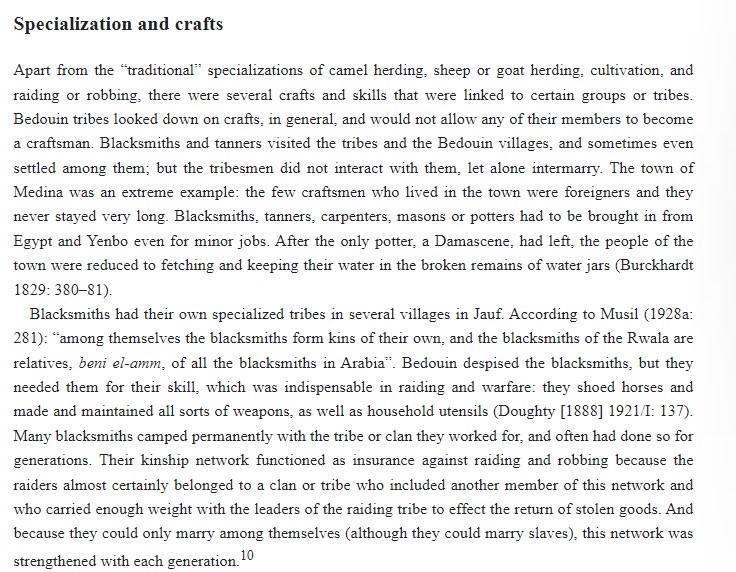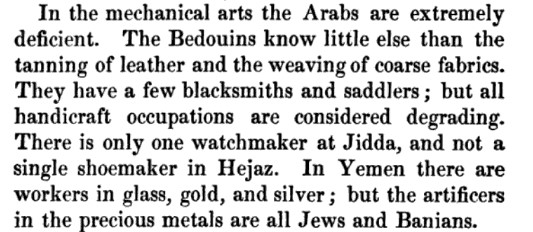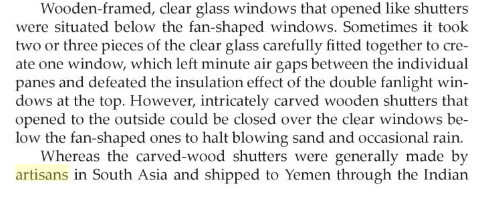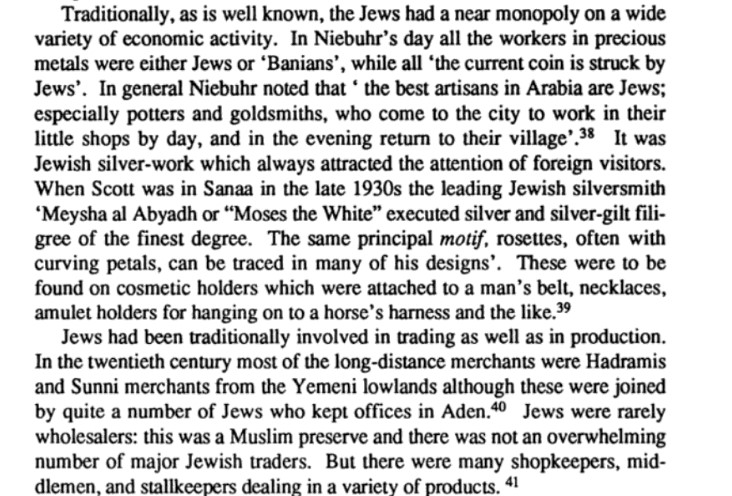I was always somewhat aware of this and how Arabians, like Somalis, have a similar aversion toward the crafts and "working with their hands" but didn't realize it was near exactly identical to the taboo among Horners:

Blacksmithing, masonry, carpentry, tanning and pottery-work. "True Arabs" hate doing it, ostracize those who do as their own separate sort of caste and do not intermarry with them, at least this was the case for centuries until very recently. A lot of the crafts in their societies was done either by these specific castes, Jews who often occupied this sort of position in Arabian society or ajanabis like Banyans (Indians). This was true even in Yemen:





This is strikingly the same custom as Horner Cushites and Ethiosemites who ostracize blacksmiths, tanners, masons, carpenters and the like the same way. The Beta Israel, for example, are one such group who apparently formed their own unique sect of the local Ethiopian Orthodoxy some mistake for "Judaism" because of how they were ostracized by the rest of Northern Ethiopian society for being artisans. Somalis have many such groups like the Tumaal, Yibir, Madhiban, and some Benadiri Gibil-Madow subtribes like the Kafari of Marko who handled work like blacksmithing and general artisanal work in the coastal towns. Though Somalis also add hunters and soothsayers to the mix. Though, interestingly, in Somali coastal towns and society as a whole the artisans seem to be entirely ethnic Somalis, and artisans, of any kind, among other Horners are also all native as far as I know. Arabs do differ from us in the single respect that they seem more willing to let ajanabis fill the roll of the "low-caste" native Arab artisans and the Jews who are pretty much native Arabians in everything but religion and a few haplogroups and very minor autosomal signals.
However, I do wonder at the possibility that some of the artisanal groups in the Horn originally had a foreign origin from places like the Fertile Crescent and India then gradually assimilated until they were genetically indistinguishable from the natives. There has to be some reason why some of these groups in our region have a Jewish origin myth given that, in Arabia, Jews are outright known to often be crafts people and the most skilled native crafts people at that:



Blacksmithing, masonry, carpentry, tanning and pottery-work. "True Arabs" hate doing it, ostracize those who do as their own separate sort of caste and do not intermarry with them, at least this was the case for centuries until very recently. A lot of the crafts in their societies was done either by these specific castes, Jews who often occupied this sort of position in Arabian society or ajanabis like Banyans (Indians). This was true even in Yemen:

History of Arabia, Ancient and Modern:
books.google.ae


Arabian Nights and Daze
This book follows a United States Foreign Service couple as they renew an official presence in Yemen. Arriving three years after the 1967 closure of the American embassy in Sanaa, the couple experimented with this unique form of "diplomacy under a foreign flag" when they opened up and managed...
books.google.ae
This is strikingly the same custom as Horner Cushites and Ethiosemites who ostracize blacksmiths, tanners, masons, carpenters and the like the same way. The Beta Israel, for example, are one such group who apparently formed their own unique sect of the local Ethiopian Orthodoxy some mistake for "Judaism" because of how they were ostracized by the rest of Northern Ethiopian society for being artisans. Somalis have many such groups like the Tumaal, Yibir, Madhiban, and some Benadiri Gibil-Madow subtribes like the Kafari of Marko who handled work like blacksmithing and general artisanal work in the coastal towns. Though Somalis also add hunters and soothsayers to the mix. Though, interestingly, in Somali coastal towns and society as a whole the artisans seem to be entirely ethnic Somalis, and artisans, of any kind, among other Horners are also all native as far as I know. Arabs do differ from us in the single respect that they seem more willing to let ajanabis fill the roll of the "low-caste" native Arab artisans and the Jews who are pretty much native Arabians in everything but religion and a few haplogroups and very minor autosomal signals.
However, I do wonder at the possibility that some of the artisanal groups in the Horn originally had a foreign origin from places like the Fertile Crescent and India then gradually assimilated until they were genetically indistinguishable from the natives. There has to be some reason why some of these groups in our region have a Jewish origin myth given that, in Arabia, Jews are outright known to often be crafts people and the most skilled native crafts people at that:

The Road to Redemption
Since the rise of Islam, Jews have been living in the Yemen as the only non-Muslim minority. Their status, never enviable, deteriorated in the twentieth century as the Imam Yahya sought to maintain the full force of Islamic law and local custom. The attempts to create a Jewish National Home in...
books.google.ae
You don't have permission to view the spoiler content.
Log in or register now.
Last edited:
